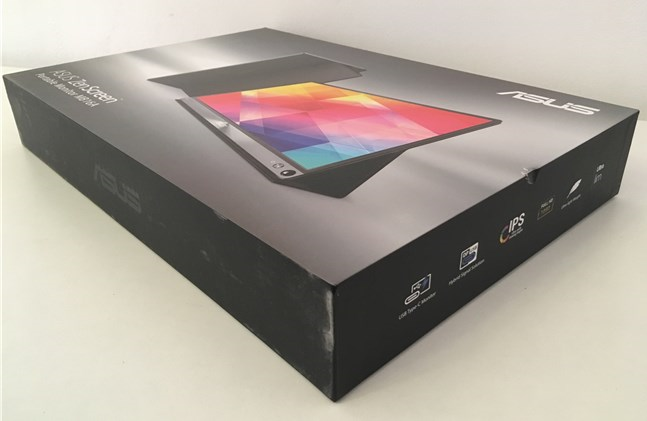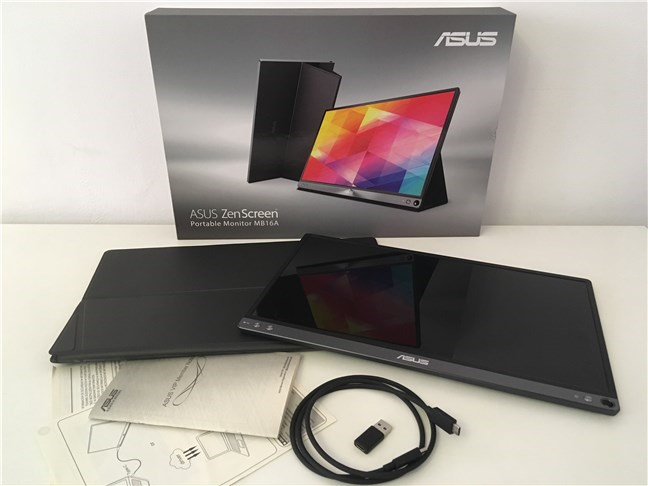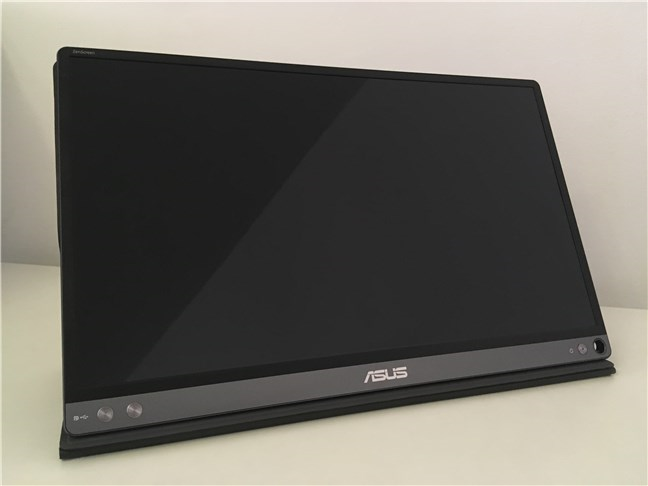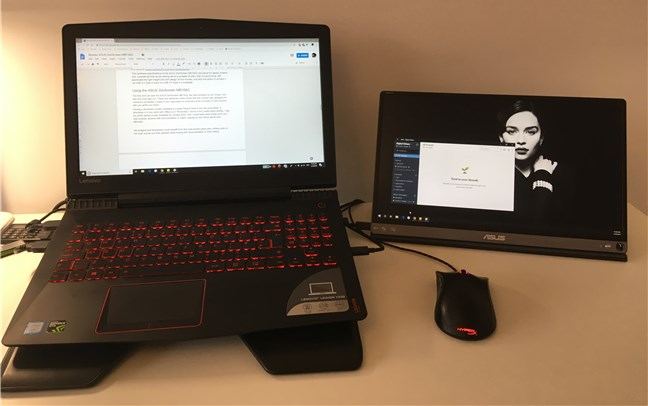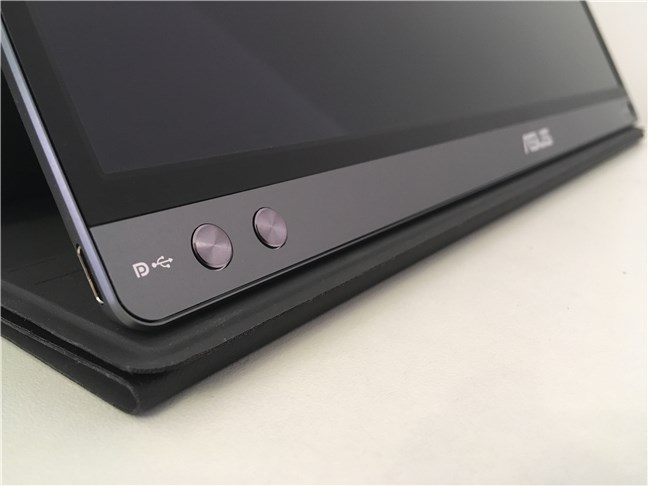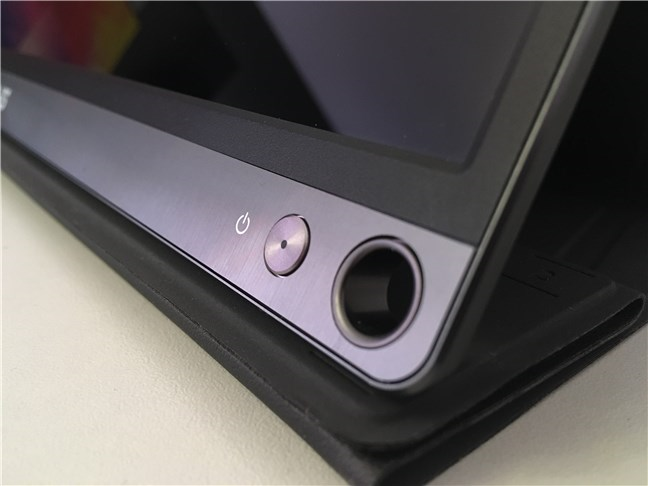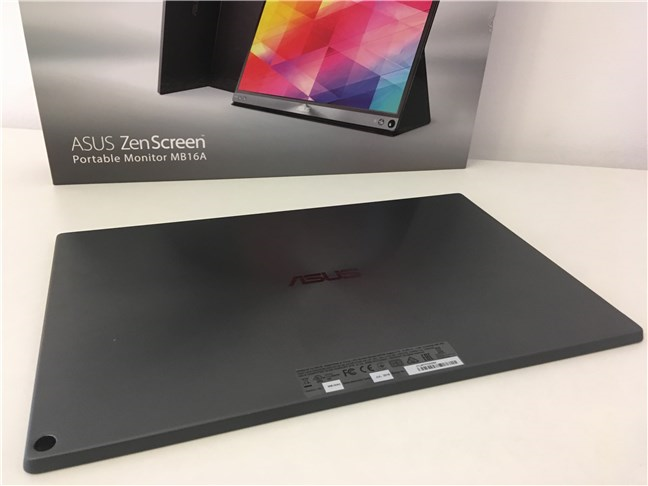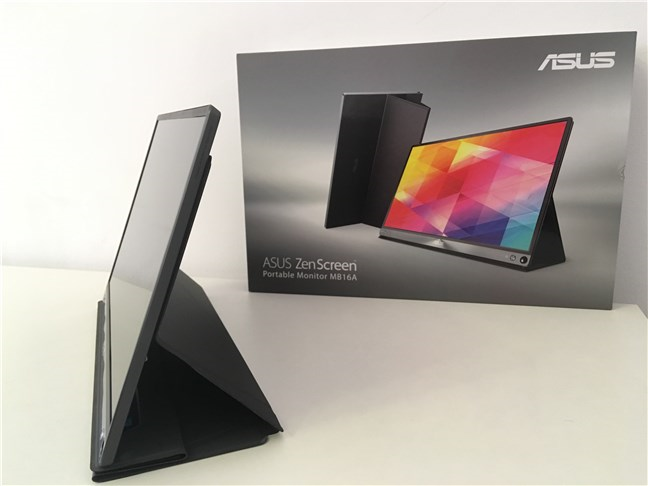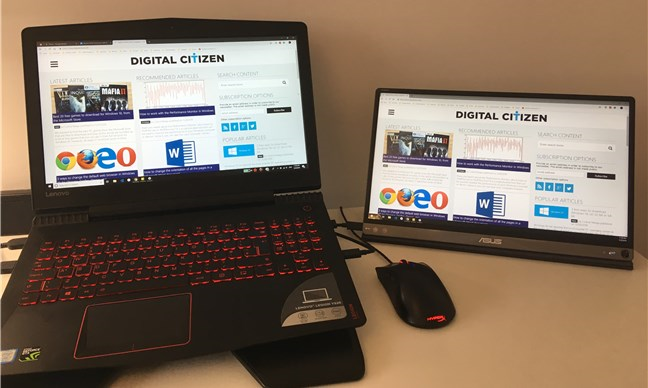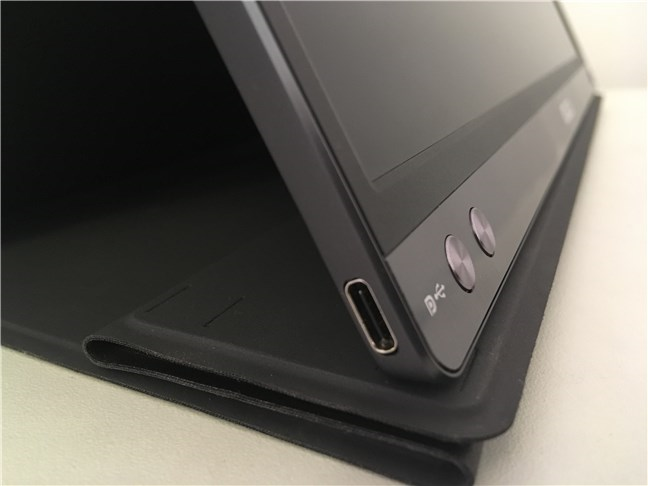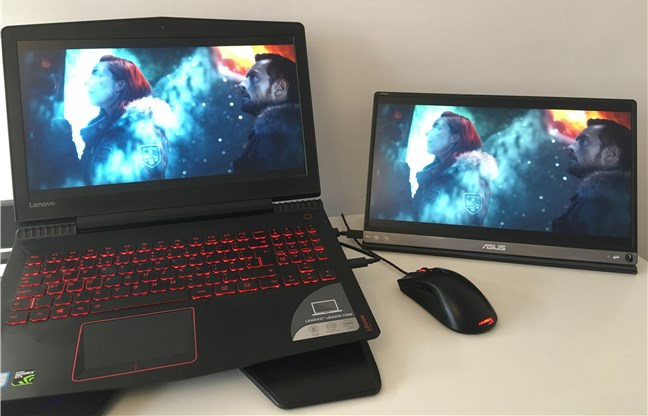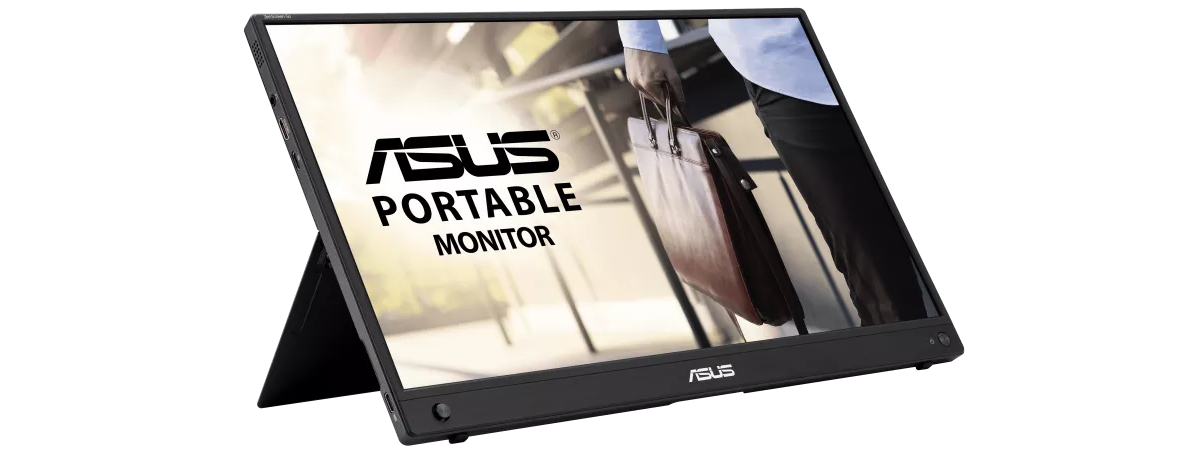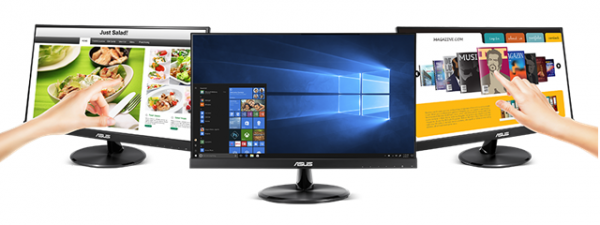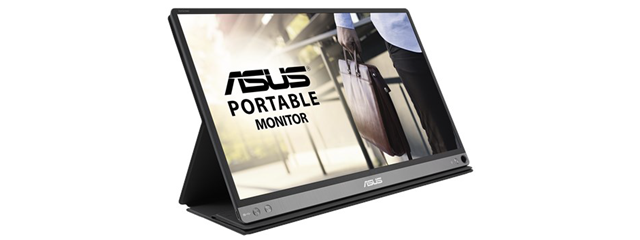
For this review, we tested a rather interesting device: a portable Full HD display created by ASUS, called ZenScreen MB16AC. It is a monitor which you can connect to your laptop via USB Type C or USB Type A, and which is small and light enough to fit in a small bag. The ZenScreen MB16AC is designed for people who are used to working on dual screen setups and who want the same experience while traveling. If you want to find out more about it and whether you should buy it or not, read our review
ASUS ZenScreen MB16AC: Who is it good for?
The ASUS ZenScreen MB16AC is an excellent choice for people who:
- Travel a lot and want to be able to add a secondary screen to their laptops
- Desire a lightweight, portable monitor that connects via a single USB port
- Want a beautiful portable monitor that is easy to carry
Pros and cons
The ASUS ZenScreen MB16AC has more than a few good things about it:
- It has a beautiful design
- It is easy to connect to any laptop, using a USB Type C or USB Type A connector
- It is thin and light, which means that it is easy to carry
- It comes with a cover that also converts into a stand
- It uses IPS technology, which means that you get good color reproduction and contrast, as well as wide viewing angles
We also identified a few drawbacks:
- The ASUS ZenScreen MB16AC is expensive
- The maximum brightness level is not high
- It takes a while before you figure out how to convert the cover into a stand
Verdict
We enjoyed using the ASUS ZenScreen MB16AC portable monitor. It is a beautiful piece of technology. We were also easily convinced by the vivid colors, the Full HD resolution, and the USB Type C connection. However, the ASUS ZenScreen MB16AC is a device that does not target a large audience. This portable monitor is relatively expensive and aimed at people who travel a lot and benefit from working in a dual-screen setup. If you are such a person, then you cannot go wrong with buying the ASUS ZenScreen MB16AC, so go ahead and buy one. It can boost your productivity, if you find yourself often working while traveling, during conferences or in hotel rooms.
Unboxing the ASUS ZenScreen MB16AC
The ASUS ZenScreen MB16AC portable monitor has a 15.6-inch screen, so its box is not big. The package is manufactured from thick premium cardboard, and while the upper side is black, the bottom of the box is white. On its upper side, you can see a large picture of the monitor inside, and its name. The bottom of the box is blank, but some of the main features of the monitor are printed on one of the box's sides.
Inside the packaging, the monitor sits inside a sandwich-like shock absorbing cardboard wrap and is tucked inside a styrofoam bag. When you unbox everything, you find the monitor, its cover that also converts into a stand, a USB Type C cable, a USB Type C to A adapter, the warranty documents, and a quick setup guide.
Unboxing the ASUS ZenScreen MB16AC is a pleasant experience. The package looks beautiful, and the care for details is obvious.
Hardware specifications
The ASUS ZenScreen MB16AC uses a 15.6-inch widescreen with an aspect ratio of 16:9 and Full HD resolution of 1920 x 1080 pixels. The IPS (In-Plane Switching) panel offers good color reproduction, a maximum contrast ratio of 800:1, and a maximum brightness of 220 cd/m2.
It uses USB 3.0 Type-C to receive the video signal and power from the device to which you connect it. It can also connect using a USB Type C to A adapter, if the laptop or device into which you plug it, does not have a USB Type C port available. The ASUS ZenScreen MB16AC has a typical power consumption of fewer than 8 Watts. In power saving mode or when it is off, it does not draw any power.
As for its physical dimensions, the monitor has a width, height, and depth of 14.16 x 8.91 x 0.31 inches (359.7 x 226.4 x 8.0 mm). The ASUS ZenScreen MB16AC weighs just 1.71 pounds or 0.78 kilograms.
If you want to see all the specifications and features for the ASUS ZenScreen MB16AC, visit this page: ASUS ZenScreen MB16AC Specifications.
The hardware specifications of the ASUS ZenScreen MB16AC are typical for laptop screens and, considering that we are talking about a portable monitor, that is a good thing. We appreciate the lightweight and slim design of this monitor, and also the option to connect it via USB 3.0 Type A when no USB 3.0 Type C port is available.
Using the ASUS ZenScreen MB16AC
The first time we saw the ASUS ZenScreen MB16AC we were amazed by two things: how slim and how light it is. These attributes show that this monitor was designed for maximum portability. It slips in your bag easily so it should not be a burden to carry around while you travel.
Having a secondary screen available is useful to have if you are a journalist, a developer or if you work with Office apps a lot. I found it useful when writing: I had my entire laptop screen available for Google Docs, and I could keep other things such as a web browser window with documentation or Slack, opened on the ASUS ZenScreen MB16AC.
Developers could benefit from this dual-screen setup also: writing code on the main screen (on their laptops) while having API documentation or their testing environment on the secondary monitor. There are, of course, other situations in which a dual-screen setup can be useful, especially if you work with many apps opened at the same time.
Regarding its design, this portable monitor is a beautiful device. The screen itself has small bezels, and that makes it feel stylish and high-tech. The bottom bezel is larger than the rest, but its metallic finish looks great. This is also the place where you can find the physical buttons available on the ASUS ZenScreen MB16AC. The two ones on the left are used to enter the monitor's menu and adjust its settings - things like the brightness, the color profile, and so forth.
On the right side, there is another physical button that is used for turning the screen on or off. Also, ASUS put a hole (yes, that's right) on the right corner, which you can use to put a pen inside to make the monitor stand.
The back of the monitor also has a metallic finishing, with ASUS' traditional (and elegant) design pattern of concentric circles etched into the surface.
The cover that you get with the ASUS ZenScreen MB16AC converts into a stand also. It looks robust and of good quality and we are certain that it can protect the monitor even if you drop it.
Unfortunately, we did not like it much as a stand: finding the right way to fold it so that it works is difficult and can rapidly annoy you, especially as there are multiple folding options. However, after we got the hang of it, we managed to place the monitor pretty firmly on our desk.
While using the ASUS ZenScreen MB16AC, our impression was that its brightness is high, although the specifications tell us it is not. The 220cd/m2 value is fairly low, but we did not think so. It felt brighter than the screen of our test laptop, although the laptop's display has higher specs.
We checked how the ASUS ZenScreen MB16AC works when connected to our laptop both using the direct USB 3.0 Type C cable and via the USB 3.0 Type C to A adapter. It worked both times flawlessly.
USB is a handy solution for connecting any device, and portable monitors are no different. However, USB connections also add latency, and that matters quite a lot when we are talking about screens. Although the ASUS ZenScreen MB16AC performs admirably in regular activities such as working with Office apps or browsing the web, it is not a great choice for entertainment. We tried to watch a movie on Netflix, on the portable monitor, but the image was stuttering. We also tested how the monitor fares in gaming, so we ran League of Legends using it. Unfortunately, the USB connection showed its limitations as the game stuttered. In even faster action games such as shooters or racing games, this lag is likely to be even more noticeable.
All in all, the ASUS ZenScreen MB16AC proved to be a great portable monitor. We loved using it, and we know that it can help anyone become more productive. If you are a laptop user mainly, and you want to have a dual-screen setup (or, why not, a triple screen setup) everywhere you go, the ASUS ZenScreen MB16AC can help you have that.
What is your opinion about the ASUS ZenScreen MB16AC?
We liked the ASUS ZenScreen MB16AC and enjoyed using it during testing. It looks like a good addition to anyone who works mainly on a laptop and wants the dual-screen experience usually available to desktop users. Do you feel the same? Would you buy this portable monitor?


 11.12.2018
11.12.2018 